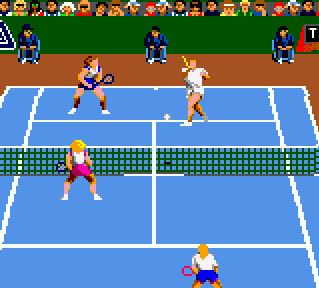Publisher: Sega Enterprises, Ltd.
Released: 1990
Dynamite Dux is a beat-em-up that was originally released in the Arcade in 1988.
+ Has a nice range of weapons that are slowly introduced to keep things interesting as you advance through the levels.+ Super Punch is a gratifying way to defeat multiple enemies and mastering it is essential for beating the tough bosses.
+ Diagonal scrolling areas help to add variety, and there's plenty of opportunities to top up your health metre.
- Despite varying scenic backdrops, the five stages feel very similar and there's no memorable moments throughout.
- Collision detection is entirely broken, with the Super Punch having the ability to hit enemies from several feet away!
- Jump kick attack is completely pointless, as you always seem to take damage whenever you attempt to use it.
- Omits characters and stages found in the Arcade original, and the two-player co-op mode is also absent.
























